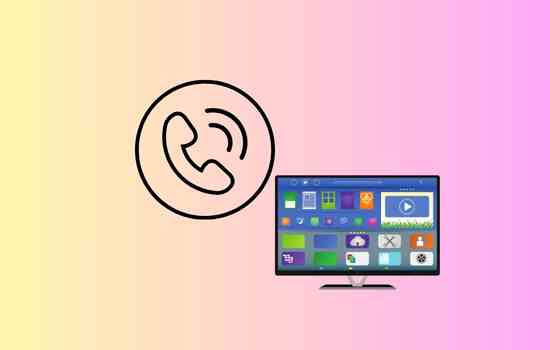Advertisements
In this post, we'll delve into two key aspects of getting the most out of your smartphone: security with the best antivirus and how to speed up its performance for a more responsive mobile experience.
Online security is paramount, even on our mobile devices. Apps like Avast, Bitdefender, and McAfee offer reliable protection against viruses, malware, and other digital threats.
Advertisements
Read also
Find out who has viewed your profile on social networks
Health! Discover the App that Measures your Blood Alcohol Level
Navigating the Selection of the Perfect Antivirus: Additional Tips for Your Selection:
Selecting the right antivirus is a crucial task in the digital age, and the variety of options can be overwhelming.
Since the protection of your device depends largely on this choice, here are some additional factors to consider to ensure you make the best decision:
Automatic Updates:
Choose an antivirus that offers automatic updates.
The ability to stay up-to-date with the latest virus and threat definitions ensures continuous defense against the latest risks.
Automating this process frees you from manual tasks and ensures you're constantly protected.
Mobile Device Compatibility:
While many antivirus programs are designed for computers, make sure the option you choose is compatible with mobile devices.
Protection shouldn't be limited to computers, as smartphones are also vulnerable to various digital threats.
Impact on System Performance: Some antivirus programs can significantly slow down your system's performance.
Do your research and choose one that minimizes the impact on your device's speed and responsiveness.
An effective antivirus should work in the background without compromising the overall user experience.
Independent Laboratory Testing: Check out reviews from independent labs that perform comprehensive antivirus testing.
Institutions such as AV-Test and AV-Comparatives conduct detailed analyses, providing valuable information on the effectiveness and performance of different security solutions.
Phishing Blocking Capability: Given the rise in phishing attacks, it's critical to choose an antivirus with robust website blocking capabilities.
Phishing protection is essential to safeguard your personal and financial data against potential online scams.
Remote Administration: Some antivirus programs offer remote management features that allow you to control the security of your devices from a central location.
This can be particularly useful if you manage the security of multiple devices from different locations.
Free Trial: Many antivirus vendors offer free trial versions.
Take advantage of these offers to evaluate the interface, performance, and efficiency before committing to a paid subscription.
This practice allows you to make an informed decision without immediate financial commitments.
Money Back Guarantee: Make sure the antivirus you choose offers a money-back guarantee.
This gives you the peace of mind that you can change your mind if the chosen solution doesn't meet your specific expectations or needs.
Keep Your Smartphone Fast: Additional Strategies for Optimal Performance:
The speed of a smartphone is crucial for a smooth user experience.
In addition to the habits mentioned above, here are some additional things you can consider to ensure your device stays agile and efficient:
Managing Widgets and Dynamic Wallpapers:
Dynamic widgets and wallpapers can consume unnecessary resources.
Consider disabling or limiting its use to free up processing power and improve your smartphone's overall performance.
Automatic Synchronization Control:
Automatic synchronization with cloud services and applications may affect performance and battery consumption.
Review your sync settings and adjust according to your needs.
By limiting automatic syncing, you can conserve resources and improve device speed.
Application Updates:
Keep all your apps up to date.
Updates not only bring new features, but also fix potential performance and security issues.
Set up automatic updates to ensure you always have the latest version of your installed apps.
Cloud Storage: Transfer photos, videos, and large files to cloud storage services.
This frees up space on your device's internal memory, which can significantly contribute to increased speed and responsiveness.
Disabling Animations: Some smartphones have options to disable or reduce user interface animations.
This can make browsing faster and smoother, especially on older devices with limited resources.
Background Data Usage Monitoring: Some apps consume data even when you're not actively using them.
Review each app's settings and disable automatic background refresh to conserve data and improve overall system efficiency.
Battery Optimization: Battery optimization not only improves battery life, but can also contribute to better performance.
Use built-in battery-saving options or consider third-party apps that offer advanced power management features.
Push Notification Limit: Push notifications can be convenient, but they can also slow down your device.
Limit push notifications to essential apps to reduce unnecessary interruptions and improve overall speed.
Network Configuration: In areas with weak signals, devices may consume more power as they try to maintain a connection.
If you don't need mobile data constantly, consider turning it off when you're not actively using your device.
Advanced Optimization: Improving Your Smartphone's Efficiency with Smart App Management:
To ensure optimal performance of your smartphone, it's essential to go beyond simply closing unnecessary apps.
Here are some additional elements for smart app management that will maximize your device's efficiency:
Resource Consumption Monitoring:
Use system monitoring applications to identify which applications consume the most resources.
These tools give you a detailed view of each app's CPU, memory, and battery usage, allowing you to make informed decisions about which ones to close or adjust.
Disabling Background Applications:
Some apps continue to run in the background even after you close them.
Check your device's settings to disable background running of apps that don't need to be constantly active. This will ease system load and improve overall speed.
Prioritizing Critical Applications:
Identify the essential apps for your daily use and make sure they get priority.
Many devices allow you to set preferences so that certain applications receive priority resources, thus improving their performance when you are actively using them.
Application Update: Keep all your apps up to date.
Updates not only provide new features, but can also optimize code and improve performance.
Newer versions of applications are often optimized for more efficient use of resources.
Using Energy Management Applications: Explore specialized energy management apps, such as Greenify or AccuBattery.
These apps can help control the power consumption of background apps, thereby optimizing battery life and improving system efficiency.
Uninstalling Bloatware: Check your device for pre-installed apps that you don't use, commonly known as bloatware.
Uninstall or disable these applications, freeing up memory space and reducing system load.
Notification Settings: Control app notifications to avoid unnecessary interruptions.
By limiting push notifications, you'll reduce resource consumption and improve system efficiency.
Using Night Mode: Some apps and operating systems offer night modes that not only reduce eye strain but can also use less power.
Consider turning on night mode at night or in low-light conditions.
Optional Developers: If you're an advanced user, explore developer options in your device's settings.
Some settings, such as throttling background processes, may be available in this menu, giving you greater control over performance.




